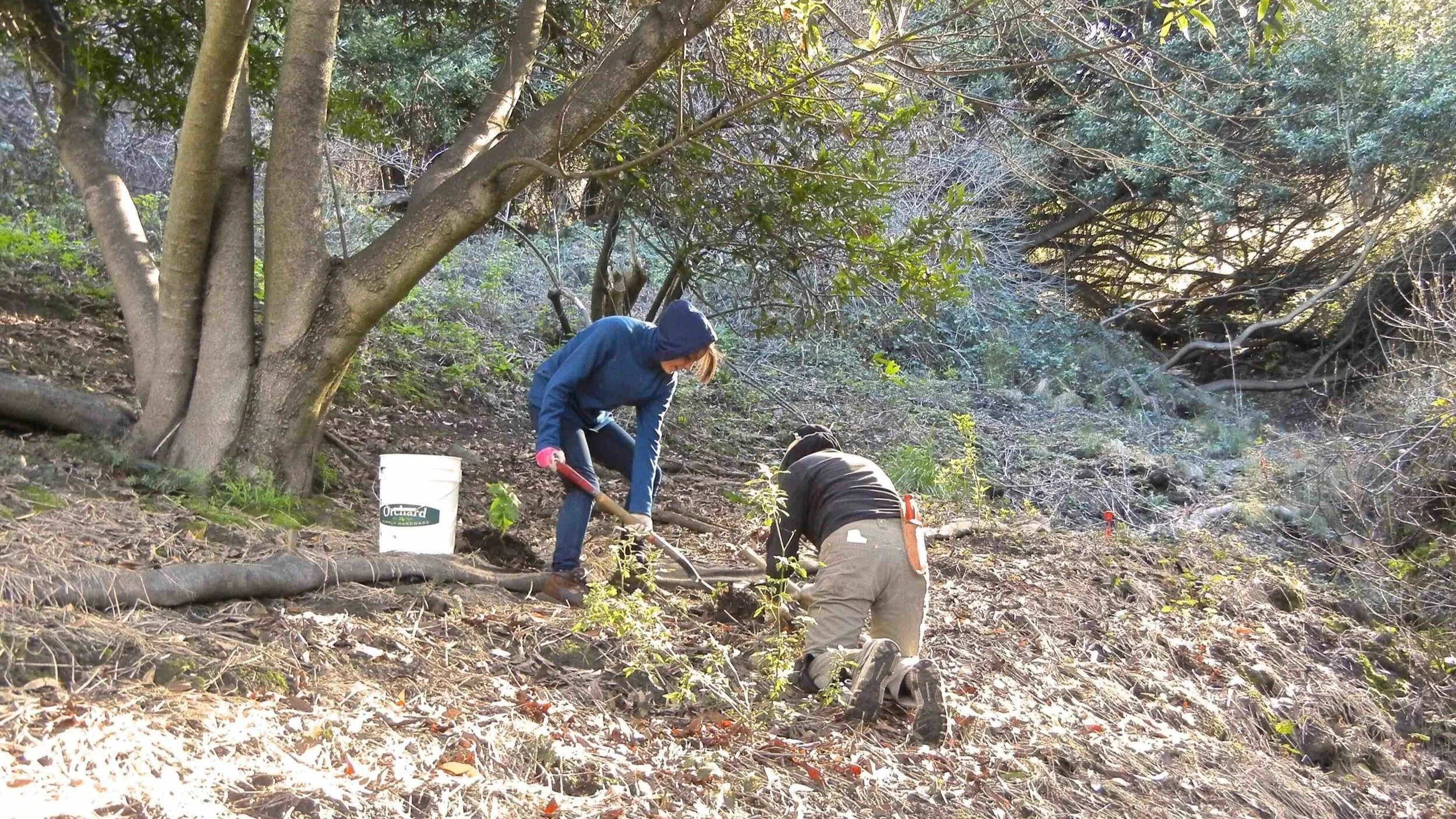Bring Back the Oaks, a video focusing on the build-up of fire fuels in the East Bay hills, and a sensible way to deal with it, was released in spring 2016 with the hands-on participation and financial support from the Conservancy.
An Invitation to burn, by Tamia Marg
The Claremont Canyon landscape and its uses have changed dramatically over the last century. From the 1800's through the first few decades of the 20th century, the East Bay hills were primarily grasslands with trees and brush growing only in canyon draws. Much of Gwin Canyon, a tributary on the south side of Claremont Canyon, was planted with Monterey Pines (Pinus radiata), a widely established practice in the hills to beautify the land for housing developments in the early Twentieth Century. That these trees were fast-growing tinder in the landscape became evident after every subsequent hill wildfire.
The Sierra Club corrects its record on its vegetation management strategy for the East Bay hills
Reprinted from the online Yodeler, September 16, 2015, with permission from the San Francisco Bay Chapter of the Sierra Club. For a copy of their flyer prepared for members and the public, click here.
As we slog through our fourth year of drought and once again watch wildfires devastate communities all across California and the West, we must acknowledge that the hotter, drier conditions we face due to climate disruption are not going away.
The Sierra Club’s eucalyptus management policy is the right approach for East Bay hills, by John Hitchen
Counting the trees, by Fred Booker
There has been much ado over UC’s proposal to remove fire prone invasive eucalyptus, pine and acacia from the slopes of Claremont Canyon. UC’s plan has often been described by opposition forces as a “clear cut,” evoking images of the denuded hillslopes following old fashioned logging operations in the Northwest.
Costs for growing large eucalyptus trees will sky-rocket, by Jerry Kent
AGENCY DECISIONS ABOUT GROWING large blue gum eucalyptus trees may be as risky as Frank Havens’ Mahogany Eucalyptus and Land Company of the early 1900s. That enterprise ultimately went belly-up when Havens’ 3,000 acres of eucalyptus trees in the East Bay Hills failed to become a “gold mine,” proving to be unusable for hardwood lumber.
Awaiting FEMA's release of the draft EIS, by L. Tim Wallace
Taking out the eucs, by Marilyn Goldhaber
Over 9,000 eucalyptus trees have been removed from Claremont Canyon since 2001 with thousands more due to come down in the next 2-4 years. Careful monitoring and follow-up of the logged areas this time around should assure that resprouts and new seedlings will not overwhelm the land, force out the native flora and fauna, and present an unacceptable wildfire hazard to the canyon and nearby homes.
Some people undoubtedly will miss the tall trees which have held their place in the canyon for nearly a century. Were they less flammable by nature and less aggressive in their growth, wildland managers might be able to deal with them differently. But such was not the case for Eucalyptus globulus, or blue gum, a species imported from Australia for commercial reasons over a hundred years ago.


